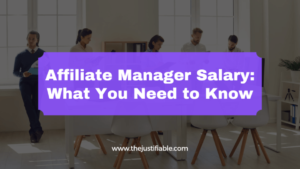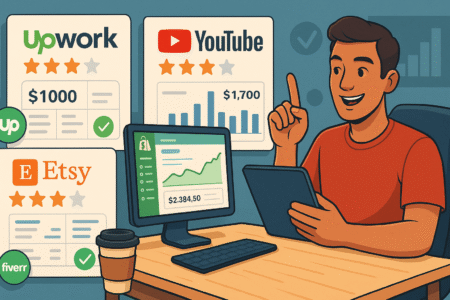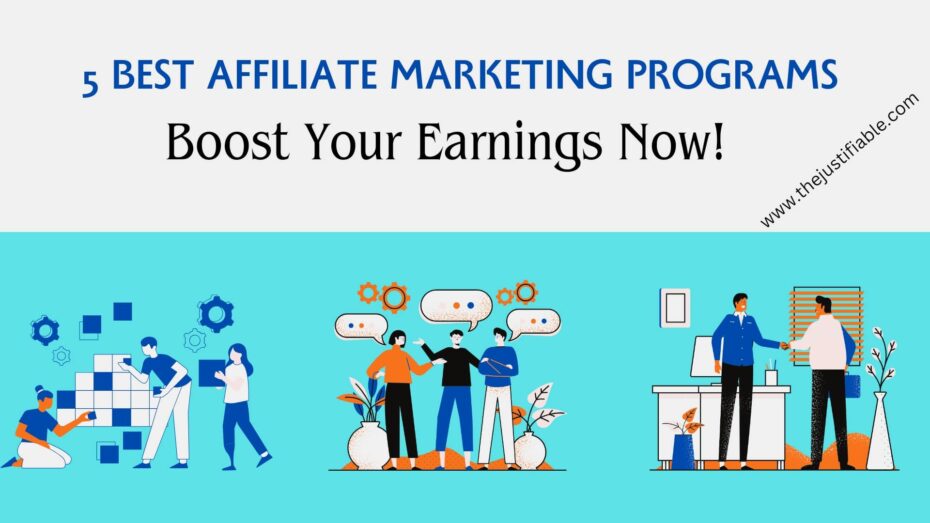Table of Contents
Are you looking for proven ways to increase your income fast? Do you feel stuck financially and need actionable money-making tips that beginners like you can actually follow?
In this article, we’ll explore practical money-making strategies that can help you build a sustainable income and fast-track your financial goals.
The great news is that you don’t need to be an expert to start—there’s a world of opportunity online, and with the right guidance, you can achieve success even as a beginner. Let’s dive in!
Can You Really Boost Your Income Fast with Proven Money Making Tips?
When you’re starting your money-making journey, it’s natural to wonder if the methods you’re reading about will actually work. I believe they can, especially if you commit to proven strategies. The right approach, combined with consistency, allows you to earn quickly without having to wait months to see results.
Of course, not all tips work for everyone, but focusing on beginner-friendly online strategies offers a real chance to grow your income. I suggest picking a few that align with your skills and interests. By trying these methods, you may unlock new opportunities to fast-track your financial success.
Why the Right Money-Making Tips Can Help You Succeed
Choosing the right money-making tips is essential because it sets you on a clear path. Not every strategy is beginner-friendly, but the right ones are easy to follow and deliver faster results. I suggest focusing on approaches that require little to no investment to avoid financial stress.
Many beginners, myself included, often get overwhelmed by the volume of advice out there. The key is to identify tips that match your current skills. I’ve seen people succeed just by starting with one simple task and scaling from there. You’ll find momentum builds quickly with the right methods.
I also feel that focusing on proven strategies saves time and effort. You don’t have to reinvent the wheel or chase shiny objects. Instead, leverage what’s already working. Proven methods tend to be repeatable, meaning anyone can apply them and see similar outcomes.
Another reason I emphasize choosing proven tips is confidence. When you know others have succeeded using these methods, it gives you the motivation to stick with them. I’ve noticed that when beginners see small wins early on, they feel more driven to continue.
Lastly, I advise measuring your progress consistently. Some money-making strategies may require tweaking before they start delivering results. By sticking with methods known to work, you’ll know it’s not the strategy failing but your execution that may need refining.
How Beginners Can Start Making Money Online Today
For beginners, the fastest way to start earning is by leveraging skills you already have. Whether it’s writing, social media, or graphic design, you can monetize these talents on various platforms. I’ve noticed how simple tasks, like creating social media content, can turn into consistent cash flow.
I suggest starting with freelance platforms like Upwork or Fiverr. These sites are beginner-friendly and allow you to find clients quickly. It may not be a six-figure gig right away, but it’s the perfect place to gain experience and start earning in just days.
Another great tip is to explore dropshipping. You don’t need to create your own products; instead, you sell items directly from suppliers. It’s one of the easiest ways for beginners to dive into eCommerce without a large investment. I’ve seen people make sales within their first month.
I also believe that blogging and affiliate marketing are fantastic long-term strategies. While they may take a little more time to see significant results, I’ve found that once your traffic grows, the earning potential skyrockets. Plus, there’s no limit to how much you can earn.
Lastly, consistency is key. I’ve seen beginners try multiple things at once, only to get discouraged. I recommend focusing on one or two strategies and seeing them through. Once you build a rhythm, it becomes easier to scale and diversify your income.
Freelancing: The Fastest Way for Beginners to Earn Money Online

Freelancing has quickly become one of the most popular ways for beginners to make money online. With platforms offering a variety of jobs, it’s now easier than ever to monetize your skills. I think freelancing stands out because of the flexibility it offers, letting you control your own schedule and income.
Freelancers also benefit from fast payments, making it an ideal choice if you need cash quickly. Once you complete a project, many clients pay right away, meaning you can have funds in your account within days. I advise beginners to start with smaller gigs to build confidence and experience.
Choosing the Right Freelance Platforms
The platform you choose can make or break your freelancing journey. I recommend starting with well-known sites like Upwork, Fiverr, or Freelancer, as they offer a wide range of opportunities. I find these platforms beginner-friendly, providing clear steps to get started without feeling overwhelmed.
I suggest focusing on one platform initially to get comfortable. Too many beginners spread themselves too thin by signing up on multiple sites. I’ve learned that focusing on one platform helps you understand how to attract clients and build a portfolio, making you more appealing.
Each platform has its own quirks. Fiverr, for example, allows you to create service “gigs” that clients can purchase, while Upwork lets you bid on projects. I suggest experimenting to see which model fits your working style. Once you find a good match, success becomes easier to achieve.
I also advise paying attention to platform fees. Sites like Fiverr take a cut of your earnings, but they provide a steady stream of clients. Others like Freelancer might have different fee structures, so it’s good to analyze where you get the most value for your time and effort.
Lastly, I recommend taking advantage of platform-specific features like portfolio showcases or client reviews. I’ve noticed that strong reviews and ratings can significantly boost your chances of landing gigs. As a beginner, these features can help you stand out from the crowd.
How to Leverage Your Existing Skills for Freelancing
The beauty of freelancing lies in using skills you already have. I suggest assessing what you’re good at—whether it’s writing, graphic design, or social media—and then translating those talents into paid gigs. I’ve found that clients appreciate freelancers who specialize in one area rather than trying to do it all.
If you’re unsure about your skills, I recommend starting with tasks you’re comfortable with. For instance, if you enjoy writing, begin with simple blog posts. As you gain experience, you can offer more complex services, which usually command higher pay. The goal is to build credibility while growing your income.
I also feel that honing your expertise in a particular niche can lead to higher-paying gigs. For example, I’ve seen people excel in niche industries like tech or healthcare writing, where specialized knowledge is valued. As you develop in your field, you can position yourself as an expert, which clients are willing to pay more for.
In my experience, clients also value reliability. Even if you’re just starting out, completing work on time and delivering quality results will help you secure repeat clients. I suggest prioritizing communication with clients as it builds trust and can lead to long-term relationships.
Finally, I believe that expanding your skillset while freelancing can help you diversify your income streams. I’ve taken on smaller tasks initially, then gradually moved into bigger projects that require advanced skills. This progression not only boosts earnings but also keeps you competitive in the marketplace.
Top In-Demand Freelance Jobs You Can Start Now
If you’re wondering what services to offer, some freelance jobs are more in demand than others. Writing is always a top choice, especially content writing, SEO writing, and copywriting. I’ve seen writers start with small blog gigs and quickly move up to high-paying content strategy roles.
Graphic design is another hot niche. You don’t need to be an expert right away. Many designers use templates or tools like Canva to create simple graphics. As you gain experience, I suggest expanding into logo design or web graphics, which are often more profitable.
If you’re tech-savvy, web development and coding are incredibly lucrative. I’ve heard of beginners learning basic HTML and CSS and getting paid to build small websites. Even basic skills in this area can earn you a consistent income, especially if you offer quick turnarounds.
Social media management is perfect for those who love online platforms. I’ve noticed a growing need for businesses to have a strong social media presence, and many are willing to pay beginners to handle their profiles. Posting, engaging with followers, and growing a brand’s audience are all valuable skills.
Lastly, virtual assistant jobs are rising in demand. Many entrepreneurs need help managing tasks like scheduling, email, or even data entry. I suggest offering virtual assistant services if you’re organized and good at multitasking. It’s a fantastic way to start earning while learning about different industries.
Start Dropshipping for a Reliable and Fast Income Stream
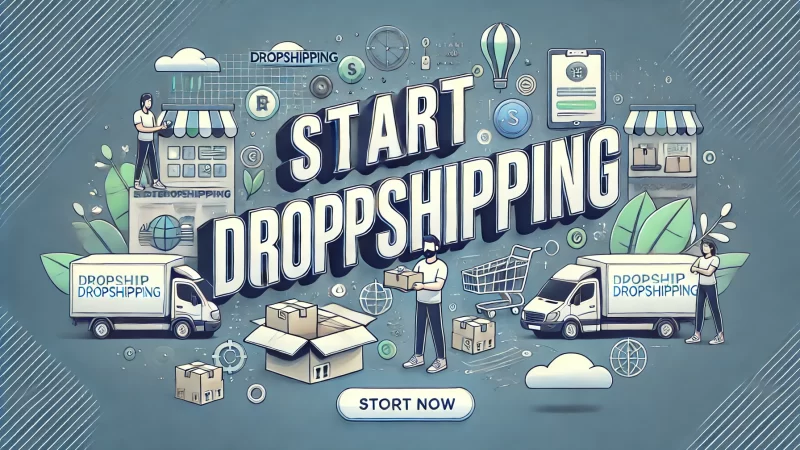
Dropshipping is a proven way to boost your income without dealing with inventory or shipping. I believe this business model is perfect for beginners since it requires low upfront costs and minimal risk. By setting up a dropshipping store, you can start selling products quickly and start earning from the first sale.
The beauty of dropshipping is its scalability. As you grow, you can add more products without having to worry about warehouse space or logistics. I suggest focusing on trending products to attract customers and generate fast results. With the right strategies, dropshipping can become a consistent income stream.
How to Set Up a Profitable Dropshipping Business in Days
Setting up a dropshipping business doesn’t need to take weeks or months. I suggest choosing a niche first—a specific product category that excites you. Whether it’s fitness gear or beauty products, I’ve noticed that having a clear niche makes marketing much easier.
Once you have a niche, I recommend finding suppliers through platforms like AliExpress or Oberlo. These sites allow you to browse a wide range of products and connect with reliable suppliers. I’ve found it’s best to choose suppliers with good reviews and fast shipping times.
Next, you’ll need an eCommerce platform to launch your store. Shopify is a top choice for beginners because of its user-friendly interface and integrations with dropshipping tools. I also like that Shopify offers a free trial, so you can test it out without upfront costs.
After setting up your store, focus on branding. I advise creating a clean, attractive website that speaks to your audience. Using high-quality images and engaging product descriptions can significantly boost your conversion rates, helping you make sales faster.
Finally, don’t forget to market your store. I’ve seen success using Facebook ads and influencer marketing to drive traffic quickly. The more eyes on your products, the faster you’ll see sales, which is the key to making dropshipping profitable within days.
Tools and Platforms to Automate Dropshipping Success
Automation tools are essential for streamlining your dropshipping business. I recommend starting with Oberlo or DSers, which can automatically sync products, manage orders, and handle inventory updates. This not only saves time but also reduces the chances of errors.
Email marketing platforms like Aweber are another tool I suggest for keeping in touch with customers. You can automate welcome emails, abandoned cart reminders, and promotional offers. I’ve noticed that well-timed emails often lead to more sales, making this a crucial automation tool.
Customer service can also be automated using tools like Zendesk or Tidio. These platforms provide live chat features and automated responses, helping you address customer queries quickly. I believe fast customer service can set you apart from competitors and improve customer satisfaction.
For automating ads, I advise looking into Facebook Ads Manager or Google Ads. These platforms allow you to create campaigns that target specific audiences, driving traffic to your store. Automation ensures your ads are optimized, helping you get the most out of your budget.
Lastly, inventory management tools like ecomdash can keep track of stock levels and reorder products automatically. I’ve found this helps avoid running out of popular items and losing potential sales. With these automation tools, running a dropshipping business becomes much smoother.
Long-Term Dropshipping Success Tips
For long-term dropshipping success, I recommend focusing on customer retention. I’ve learned that loyal customers can generate steady sales, so offering discounts or loyalty programs keeps them coming back. Building a reliable customer base is key to sustaining your business.
Another long-term strategy is expanding your product range. I suggest starting with a few items, then gradually adding more based on customer feedback. I’ve seen businesses grow quickly by introducing new, complementary products that keep customers engaged.
Staying on top of trends is also important. I advise using tools like Buzzsumo to identify hot products that are in demand. Offering the right products at the right time can drive massive traffic to your store, helping you maintain profitability.
I also recommend optimizing your store for SEO. Creating blog content related to your niche, improving product descriptions, and using relevant keywords can help you rank higher on search engines. In the long run, organic traffic can significantly reduce your advertising costs.
Finally, don’t overlook analytics. I find it helpful to regularly review sales data to see what’s working and what’s not. By adjusting your strategies based on real data, you can refine your approach and continue growing your dropshipping business long-term.
Online Course Creation: Turn Your Knowledge into Passive Income
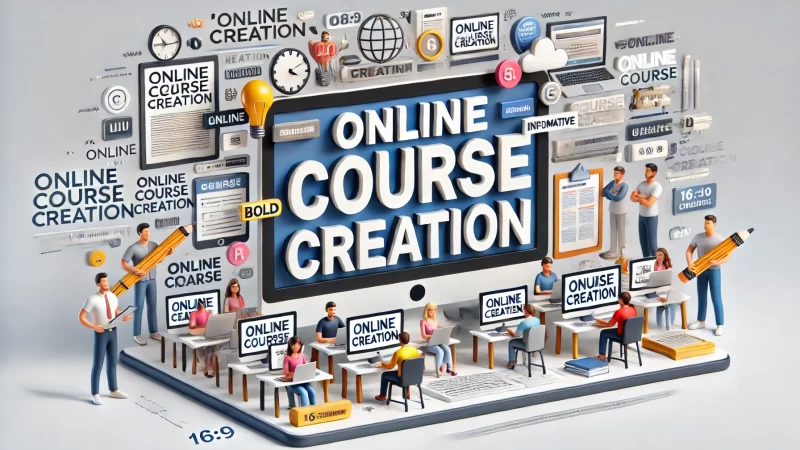
Creating an online course is a fantastic way to turn your knowledge into a steady stream of passive income. I believe this is ideal for beginners because it allows you to share what you know while earning money repeatedly. Once the course is live, you can earn from it without ongoing effort.
The best part about online courses is their scalability. You can sell the same course to hundreds or thousands of people without additional work. I recommend this model for anyone looking to generate long-term, sustainable income while helping others learn valuable skills.
Why Creating an Online Course is Perfect for Beginners
Creating an online course is beginner-friendly because you don’t need fancy equipment or technical expertise. I suggest starting with topics you already know well, whether it’s a hobby, skill, or professional knowledge. Teaching others what you’re passionate about can also make the process more enjoyable.
I recommend keeping your first course simple. Many beginners feel overwhelmed by the idea of creating a massive, comprehensive course, but I’ve seen smaller, niche courses perform well. Focus on solving a specific problem for your audience, and you’ll find people eager to enroll.
Another reason I love online courses is that they require little upfront investment. I suggest using free or affordable tools like Zoom or Loom to record your lessons. You can create professional-looking content without breaking the bank, making this a low-risk venture.
In my experience, the demand for online learning is growing rapidly. People around the world are looking for ways to upskill, making this a global opportunity. I’ve seen courses on everything from photography to coding succeed, proving that there’s a market for nearly any skill.
Lastly, online courses offer flexibility. You can set your own pace for creating and launching the course. I recommend taking your time to ensure the content is valuable and high quality, as this will help you attract more students and earn positive reviews.
How to Choose a Profitable Niche for Your Online Course
Choosing the right niche is critical to your course’s success. I suggest starting by thinking about what you enjoy teaching and what others want to learn. Finding a balance between passion and demand can help you create a course that’s both fun to make and highly profitable.
To ensure there’s demand for your topic, I recommend doing keyword research. Tools like SEOPowersuite can show you how many people are searching for your course topic. I’ve also found that browsing platforms like Udemy or Coursera can give you insights into popular courses.
Another strategy I suggest is surveying your potential audience. I’ve used social media polls and email lists to ask followers what they would be interested in learning. This feedback helps you create a course that directly solves their needs, increasing the chances of success.
I also advise narrowing down your niche. Instead of creating a broad course on “digital marketing,” focus on a specific area like “Instagram marketing for small businesses.” I’ve noticed that niche courses often attract more engaged learners and have less competition.
Lastly, consider the profitability of your niche. Some niches naturally command higher prices, such as coding, finance, or personal development. I recommend looking at what similar courses are charging to ensure you’re pricing your course competitively while maximizing your earnings.
Platforms to Easily Host and Sell Your Course Globally
There are several platforms that make hosting and selling your course a breeze. I recommend starting with Udemy or Teachable. These platforms are user-friendly, allowing you to upload videos, set pricing, and manage students effortlessly. I’ve seen beginners succeed by using these tools without technical headaches.
If you want more control over branding and pricing, I suggest using Kajabi or Thinkific. These platforms give you more flexibility in how you design your course site and market your course globally. I’ve noticed that having your own domain can make your course look more professional.
Another key feature to consider is payment processing. Platforms like Teachable offer built-in payment options, making it easy to sell courses worldwide. I suggest choosing platforms that handle multiple currencies and offer flexible payment methods to appeal to a global audience.
For those on a budget, I advise looking into free platforms like Gumroad. While not as feature-rich as paid options, I’ve seen creators successfully sell digital products and courses on Gumroad. It’s a great way to start without any upfront costs, and you can always upgrade later.
Lastly, consider marketing your course through social media and email lists. Most platforms, including Udemy, allow you to promote your course to their audience, but I suggest building your own following for long-term success. The more people you reach, the more sales you’ll generate globally.
How to Use Affiliate Marketing for Quick and Steady Income

Affiliate marketing is one of the easiest ways to earn quick and consistent income. I recommend it for beginners because you don’t need to create your own products. You simply promote other people’s products and earn a commission when someone makes a purchase through your unique link.
The beauty of affiliate marketing is its flexibility. You can incorporate it into nearly any platform—whether you have a blog, YouTube channel, or social media presence. I suggest starting with products you personally use or love, as authenticity can increase your chances of success.
Affiliate Programs You Can Join to Make Fast Money
When starting with affiliate marketing, I suggest signing up for well-established affiliate programs. Amazon Associates is one of the most popular choices. I’ve seen beginners succeed by promoting everyday items from Amazon’s vast inventory, making it an excellent starting point.
Another option is joining ShareASale or Commission Junction. These platforms partner with a wide range of brands, giving you many products to promote. I recommend finding products within a niche you’re passionate about, as it makes promotion more natural and effective.
I also suggest looking into niche-specific affiliate programs, such as Bluehost for web hosting or Skillshare for online learning. These programs offer competitive commissions and align with audiences interested in learning or entrepreneurship, making it easier to target your marketing efforts.
If you’re active on social media, I’ve heard that affiliate programs from brands like RewardStyle or LIKEtoKNOW.it are great for Instagram influencers. These platforms let you share fashion, beauty, or lifestyle products, earning commissions when your followers purchase through your links.
Finally, for those interested in digital products, I recommend ClickBank or Rakuten Marketing. These platforms specialize in ebooks, software, and online courses, which often offer higher commissions. I believe focusing on digital products can help you make money faster since many people are looking for quick solutions online.
Strategies for Promoting Affiliate Products to Maximize Earnings
The key to successful affiliate marketing is promoting products in a way that feels genuine. I suggest creating valuable content around the products you promote, whether through blog posts, videos, or tutorials. I’ve noticed that when you educate your audience, they’re more likely to trust your recommendations.
Another strategy I recommend is building an email list. With an engaged email list, you can directly promote affiliate offers to subscribers who trust you. I’ve seen people achieve quick sales by sending product recommendations or exclusive deals straight to their inboxes.
I also advise incorporating affiliate links into evergreen content. Blog posts or videos that remain relevant over time can continue driving traffic and sales long after they’re published. I’ve seen content like “best product” guides or “how-to” tutorials consistently perform well for affiliate marketing.
If you have a social media presence, I recommend leveraging your followers by sharing product reviews or demos. I’ve found that Instagram stories or TikTok videos are excellent for showing how products work in real life, which can significantly increase conversions.
Finally, consistency is crucial. I’ve noticed that the more you incorporate affiliate links into your content, the more sales you’ll generate. By continually sharing useful products with your audience, you can create a steady stream of income that grows over time.
Long-Term Growth with Affiliate Marketing: Tips for Scaling
Scaling affiliate marketing to create a long-term income stream requires strategy. I advise diversifying your affiliate programs. Don’t rely on just one platform or product. Instead, promote a range of products that align with your niche to attract a broader audience and increase earnings potential.
Another tip I suggest is investing in SEO. By optimizing your content for search engines, you can drive more organic traffic to your affiliate links. I’ve seen SEO-optimized blog posts rank higher and generate passive income through affiliate commissions, without ongoing promotion.
As your audience grows, I recommend using paid advertising to promote your affiliate offers. Google Ads or Facebook Ads can help you reach a larger audience quickly. I’ve heard that when done right, paid ads can significantly boost your affiliate earnings in a short period.
Building relationships with the companies you’re an affiliate for is another long-term strategy. I’ve noticed that affiliates who partner closely with brands can negotiate higher commissions or exclusive deals, further increasing their income potential.
Finally, I advise tracking and analyzing your performance. Use tools like ClickMagic or affiliate dashboards to see which products and strategies are working best. I’ve found that continually optimizing your approach leads to more significant earnings over time.
How to Launch a Successful Blog That Earns Money Fast

Blogging remains one of the most powerful ways to generate income online, even for beginners. I believe it’s a great platform because you can share your expertise, passions, or hobbies with the world while earning money through multiple channels, such as ads, affiliate marketing, or sponsorships.
Starting a blog is relatively easy, but monetizing it takes time and effort. I suggest choosing a niche you’re passionate about, as this will make it easier to create consistent content. With the right strategy, you can start earning money within months of launching your blog.
Finding Profitable Blog Niches for Beginners
When choosing a niche for your blog, I recommend focusing on topics that interest you and have a proven audience. I’ve seen niches like personal finance, health, and lifestyle perform well because people are always searching for content in these areas.
I also suggest conducting keyword research to identify niches with low competition and high search volume. Tools like Google Keyword Planner or Ubersuggest can help you find lucrative keywords. I’ve found that targeting less competitive topics makes it easier to rank on search engines.
Another profitable niche I recommend for beginners is “how-to” content. I’ve seen blogs that focus on tutorials or DIY projects attract a lot of traffic, as people love learning new skills. Whether it’s tech tips, cooking, or home improvement, there’s always a demand for practical advice.
Lifestyle blogs can also be profitable if you focus on a specific audience, such as new moms, college students, or remote workers. I suggest narrowing your focus to a sub-niche to stand out from the crowd. This targeted approach helps attract readers who are more likely to engage with your content.
Lastly, I advise picking a niche you can consistently write about. Blogging requires frequent updates to grow traffic and engagement. I’ve seen successful bloggers write about topics they genuinely love, making it easier to create content over the long term.
Monetizing Your Blog with Ads, Sponsorships, and Affiliate Marketing
Once you have traffic coming to your blog, I suggest monetizing it through multiple income streams. One of the easiest ways to start is with Monetag, a program that allows you to earn money by displaying ads on your blog. I’ve seen bloggers earn passive income as their site traffic grows.
Affiliate marketing is another great way to monetize your blog. I recommend including affiliate links within your blog posts, especially in product reviews or recommendation lists. I’ve noticed that when you offer helpful content alongside your links, readers are more likely to make purchases.
I also suggest seeking sponsorships from brands that align with your blog’s niche. Many companies are willing to pay bloggers to promote their products through sponsored posts or reviews. I’ve heard of bloggers earning substantial income from just a few high-quality sponsorships.
Additionally, selling your own digital products, such as ebooks or online courses, can be highly profitable. I’ve seen many bloggers turn their knowledge into paid products, offering exclusive content to their readers. This not only boosts income but also builds trust with your audience.
Finally, consider using membership or subscription models. Platforms like Patreon allow your readers to support you in exchange for exclusive content. I’ve found that this method works well for bloggers with a loyal following who want to offer extra value to their audience.
Best Blogging Platforms for Quick Set-Up and Monetization
Choosing the right platform is crucial for launching a blog quickly and starting to earn money. I suggest using WordPress.org because it offers the most flexibility and is highly customizable. I’ve noticed that many successful bloggers use WordPress due to its powerful plugins and SEO capabilities.
Another option is Blogger, which is free and easy to set up. While it doesn’t offer as much customization as WordPress, I’ve seen beginners use Blogger to get started quickly and build a small audience. It’s a good choice if you want to test blogging before committing to a paid platform.
Squarespace is another platform I recommend for bloggers who want a more visually appealing site. While it’s a paid service, I’ve found it user-friendly with beautiful templates that make your blog stand out. Plus, it integrates well with ecommerce, allowing you to sell products or services directly from your blog.
If you’re looking to monetize fast, I suggest Medium. Medium’s Partner Program pays you based on the time readers spend engaging with your articles. I’ve seen writers generate income almost immediately after publishing, making it an excellent platform for quick monetization.
Finally, for those who want an all-in-one solution, I recommend Wix. It’s easy to set up, and with its drag-and-drop builder, you can create a professional-looking blog in minutes. I’ve heard that Wix is ideal for beginners who want a fast and simple way to start blogging and making money.
Use Email Marketing to Build a Sustainable Income Stream
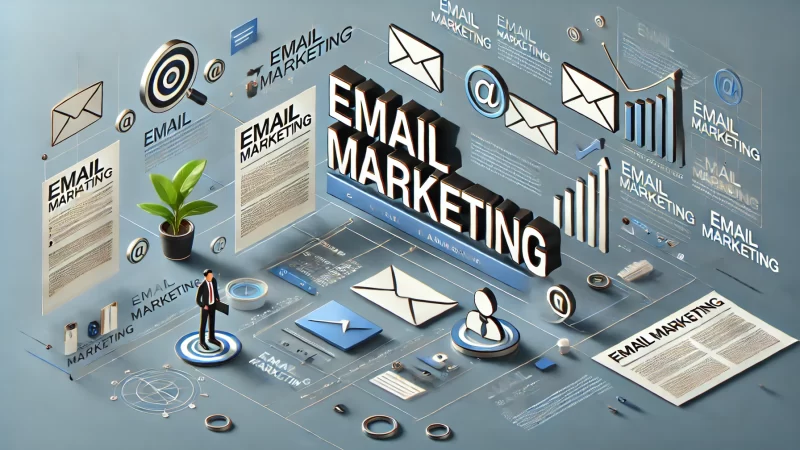
Email marketing is a highly effective way to create a sustainable income stream, especially for beginners. I suggest focusing on building strong relationships with your subscribers by offering them valuable content. Once your list grows, you’ll find plenty of opportunities to monetize it consistently.
The best part about email marketing is its scalability. I’ve seen small lists of a few hundred subscribers generate reliable income, and as your list grows, so do your earning opportunities. I recommend starting with a clear plan and sticking with it, as email marketing offers long-term rewards.
Why Email Marketing is Still a Top Choice for Earning Online
Email marketing remains a top choice for earning online because it allows for direct communication with your audience. I’ve noticed that people who opt-in to your list are more engaged and likely to purchase. This personal connection can lead to higher conversion rates compared to social media.
Another reason I recommend email marketing is its low cost. You don’t need to spend a lot of money on ads to build a relationship with your audience. I’ve seen people successfully start with free email tools and grow from there, making it accessible for anyone looking to start earning.
I also believe email marketing is versatile. Whether you’re promoting affiliate products, selling courses, or offering services, you can use emails to connect with your audience in a personalized way. I’ve found that targeted email campaigns often bring in more sales than broader marketing efforts.
Email marketing also offers measurable results. With open rates, click-through rates, and conversion tracking, I’ve found it easy to optimize campaigns. These insights allow you to continually improve and achieve higher profits with every email you send, boosting your long-term income.
Finally, I advise focusing on nurturing your audience. Email marketing isn’t just about selling; it’s about building trust. I’ve seen people succeed by offering valuable tips, exclusive deals, or behind-the-scenes content to create a loyal subscriber base. Once trust is established, sales become natural.
How to Build Your Email List from Scratch
Building your email list from scratch might sound daunting, but I believe it’s one of the most rewarding parts of email marketing. Start by offering something valuable, like a free guide or ebook. I’ve found that people are more willing to share their email when they receive something in return.
You can use pop-ups or embedded sign-up forms on your website to capture emails. I recommend tools like ConvertKit or Mailchimp, which allow you to create professional-looking forms. I’ve seen higher conversions when forms are simple and ask for minimal information, usually just a name and email.
Another strategy I suggest is promoting your lead magnet (the free offer) through social media or paid ads. I’ve heard that targeted ads on Facebook or Instagram can help you reach a larger audience. By driving traffic to your opt-in page, you can build your list faster.
Networking with other creators can also boost your list. I recommend guest blogging or collaborating with influencers who can introduce you to their audience. I’ve noticed that partnering with others can quickly expand your reach and lead to more subscribers.
Lastly, I advise consistently delivering value to your list. People will stay subscribed if they feel like they’re gaining something. I’ve seen email lists grow faster when people receive engaging content they look forward to, such as weekly tips or special promotions.
Ways to Monetize Your Email List for Long-Term Growth
Once you have an engaged email list, I suggest exploring different ways to monetize it for long-term income. One of the easiest methods is affiliate marketing. I’ve seen people earn steady commissions by promoting products or services that align with their audience’s interests.
You can also use your email list to promote your own products. I’ve noticed that when you introduce your own ebooks, courses, or consulting services, your list is more likely to buy because they already trust you. Personalized emails that address their needs tend to perform the best.
Another option I recommend is offering exclusive discounts or promotions through your email list. By giving your subscribers special offers, you create a sense of urgency that can boost sales. I’ve found this strategy works well for seasonal campaigns or product launches.
You can also sell ad space in your emails if you have a large enough list. I’ve heard of bloggers and business owners earning money by featuring sponsored content or products in their newsletters. This can be a great passive income stream once you’ve built a sizable audience.
Finally, I advise using your email list for long-term brand building. The stronger your relationship with your audience, the more opportunities you’ll have to sell to them. I’ve seen businesses thrive by focusing on nurturing their subscribers, leading to higher lifetime customer value.
Selling Digital Products: Easy-to-Scale Money Making Idea

Selling digital products is a fantastic way to create a scalable income stream. I love that once you create the product, you can sell it repeatedly without any additional costs. This allows for infinite scalability, meaning your earnings potential is only limited by how well you market your products.
Digital products, such as ebooks, online courses, or printables, are easy to produce and deliver. I recommend this for beginners because it doesn’t require much upfront investment. You can focus on creating high-value content that solves a problem for your audience, ensuring long-term success.
Popular Digital Products You Can Create and Sell
If you’re not sure where to start, I recommend focusing on digital products that have proven demand. Ebooks are one of the most popular choices. I’ve seen people turn their knowledge into short, valuable guides that can be sold over and over with little effort.
Online courses are another lucrative option. I’ve noticed that courses on topics like marketing, fitness, and productivity perform particularly well. People are always looking to upskill, and if you can teach something valuable, you’re likely to find an audience willing to pay.
Printables are also easy-to-sell digital products. I suggest creating planners, worksheets, or even creative designs that people can print at home. I’ve seen Etsy shops thrive by offering these types of products, and once they’re created, they require minimal maintenance.
Software or apps are another digital product you could explore. While this option may require more technical skills, I’ve found that even simple tools, such as templates or productivity apps, can generate significant income. The more you can automate a process for someone, the more they’ll pay.
Finally, I recommend selling memberships or digital subscriptions. If you have an ongoing skill to teach or regularly update content, subscriptions can bring in recurring revenue. I’ve seen this model work well for content creators offering exclusive materials or insights to paying members.
Platforms for Selling Digital Products Effortlessly
Choosing the right platform to sell your digital products is essential for maximizing your profits. I recommend using platforms like Gumroad or Payhip, which are specifically designed for selling digital goods. I’ve seen these platforms work well because they handle payments, file delivery, and customer management for you.
For those selling courses, I suggest Teachable or Thinkific. These platforms offer everything you need to create and host an online course, from video hosting to quizzes. I’ve noticed that Teachable is particularly beginner-friendly, with plenty of tools to help you succeed.
Etsy is another great platform for selling digital products like printables. I’ve heard that many creators have built profitable shops by listing creative digital items on Etsy’s marketplace. It’s easy to use, and you can reach a broad audience without worrying about setting up a full website.
If you prefer more control over your sales process, I advise setting up your own website using platforms like Shopify or WordPress with WooCommerce. This gives you full ownership of your business and branding, though it requires a bit more effort upfront.
Lastly, for selling apps or software, I recommend using platforms like AppSumo or Paddle. These sites allow you to reach a large audience quickly. I’ve noticed that tech-related products often perform better on these platforms, which specialize in promoting digital tools.
HLong-Term Success Strategies for Selling Digital Products
Achieving long-term success with digital products requires consistent effort. I suggest starting with a product that solves a specific problem for your audience. I’ve seen that niche products tend to perform better because they address a clear need that other products may not cover.
I advise building an email list to promote your digital products. By staying in touch with your audience, you can offer exclusive deals, provide product updates, and even upsell additional products. I’ve found that repeat customers can become your biggest source of ongoing revenue.
Another key strategy I recommend is regularly updating your products. I’ve seen creators offer free or discounted updates to existing customers, which not only keeps them engaged but also attracts new buyers. Keeping your product relevant can extend its lifespan and profitability.
Offering bonuses or bundling products can also boost sales. I suggest creating value-packed bundles that combine related products. I’ve found that people are more likely to make a purchase when they feel like they’re getting a great deal, and bundles often increase the average transaction size.
Finally, I believe in leveraging customer feedback. I’ve seen businesses grow by listening to their customers and improving products based on their needs. By continually refining your offerings, you can build a loyal customer base that supports your digital product business for years to come.
Web Development for Beginners: How to Learn and Earn Quickly
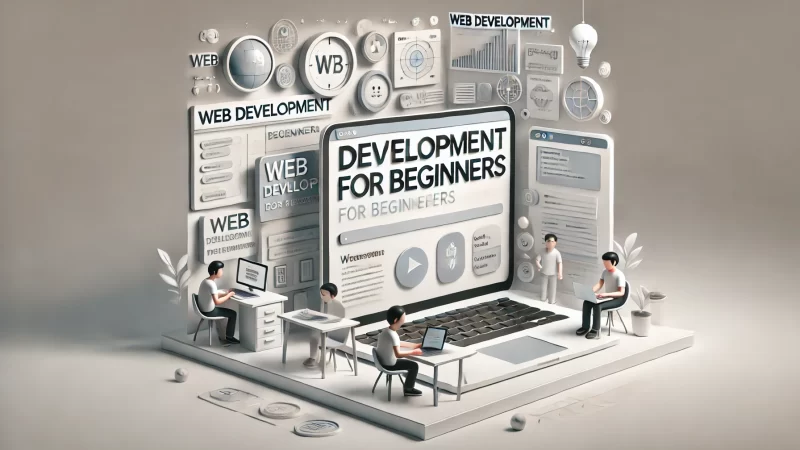
Web development is one of the fastest ways to boost your income, even if you’re a beginner. I suggest starting with the basics, such as HTML, CSS, and JavaScript, which are essential for building websites. Once you grasp these, you’ll be ready to take on paid projects.
What makes web development a great money-making skill is its high demand. Businesses, big and small, need websites. I recommend focusing on freelancing or taking on small projects while learning. You can quickly start earning and build up your experience as you learn more advanced skills.
The Best Ways to Learn Web Development Fast
I suggest starting with online courses on platforms like Codecademy or free resources like W3Schools. These provide structured lessons for beginners and are easy to follow. I’ve seen people go from zero experience to building their first website within weeks, making them perfect for fast learning.
YouTube tutorials are another great resource. I’ve found that hands-on coding is the best way to learn web development quickly. Follow along with tutorial projects to practice your skills. I recommend building small projects, like personal blogs or portfolio sites, to gain practical experience.
I also advise joining coding bootcamps. They offer an intensive learning experience that can accelerate your journey. Bootcamps like Le Wagon or General Assembly help you learn web development faster by immersing you in a fast-paced environment with real-world projects.
Another tip I suggest is practicing coding challenges. Sites like HackerRank or Codewars provide coding exercises to help you improve problem-solving skills. I’ve noticed that daily practice keeps your skills sharp and prepares you for more advanced web development tasks.
Lastly, I recommend creating your own website or portfolio. This not only gives you something to showcase to clients but also deepens your understanding of web development. The process of troubleshooting and refining your site is invaluable for solidifying what you’ve learned.
High-Demand Web Development Skills You Can Monetize
One of the most marketable skills in web development is knowing front-end technologies like HTML, CSS, and JavaScript. I suggest focusing on these first because they are essential for building visually appealing websites. Businesses are always in need of developers who can create stunning interfaces.
Responsive design is another high-demand skill. I’ve noticed that with the growing use of mobile devices, clients are looking for developers who can make their websites mobile-friendly. Knowing how to create sites that work on both desktop and mobile can make you more competitive in the job market.
I also recommend learning back-end development. Skills in languages like Python, Ruby, or PHP, and frameworks like Django or Node.js, are in demand because they handle the server-side functionality of websites. I’ve found that developers who can do both front-end and back-end earn significantly more.
E-commerce development is another area I suggest exploring. Platforms like Shopify or WooCommerce are booming, and I’ve seen developers who specialize in building online stores find high-paying clients. Mastering these platforms can open up a steady stream of freelance opportunities.
Finally, I advise learning content management systems (CMS) like WordPress. Many small businesses use WordPress for their websites, and I’ve noticed that developers who can customize WordPress themes or plugins are highly sought after. It’s a great way to start earning quickly.
Freelancing vs. Full-Time Job in Web Development
Freelancing offers flexibility and the chance to work on various projects, which I love. As a freelancer, you can control your schedule and choose your clients. I’ve heard from many developers who enjoy the freedom and variety freelancing provides, allowing them to work on multiple websites simultaneously.
In contrast, a full-time job provides stability. I suggest considering full-time work if you’re looking for a consistent paycheck and benefits like health insurance or retirement plans. Full-time roles often give you the chance to dive deep into long-term projects and develop specialized skills.
Freelancers, however, may experience income fluctuations. I’ve seen developers who start with small gigs but quickly build a steady client base. If you’re organized and proactive in seeking clients, freelancing can become as reliable as a full-time job, often with higher pay rates.
I believe that freelancing is ideal for beginners who want to test the waters. You can take on smaller projects while learning and build your portfolio. On the other hand, if you’re seeking growth and mentorship, full-time roles may offer more opportunities to advance within a company.
Ultimately, I suggest finding a balance that works for you. Some developers start freelancing and transition into full-time roles or vice versa. Both paths offer valuable experiences, and I’ve seen success stories from developers in both freelance and traditional employment settings.
The Power of Content Creation for Fast and Lucrative Income
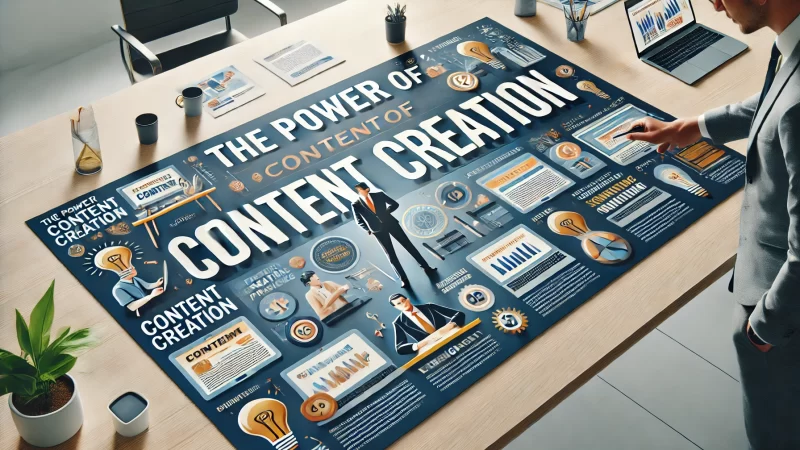
Content creation is one of the most accessible ways to earn money online, and I believe anyone can start right away. Platforms like YouTube and TikTok offer huge audiences that are always hungry for new, engaging content. Whether you’re creating tutorials, entertainment, or product reviews, there’s an opportunity to earn.
What I love about content creation is its scalability. You can start small with a few videos or posts, and as your audience grows, so does your income potential. I suggest focusing on building authentic connections with your viewers because loyalty leads to long-term monetization opportunities.
Creating Content on YouTube and TikTok for Quick Earnings
I recommend YouTube for its robust monetization options. Once you hit the requirements of 1,000 subscribers and 4,000 watch hours, you can join the YouTube Partner Program. I’ve seen creators earn money through ad revenue, making it one of the fastest ways to start earning.
TikTok offers quick audience growth, which is why I suggest using it to build your brand. I’ve heard of creators going viral overnight, leading to sponsorship deals or brand collaborations. TikTok’s algorithm favors content that engages viewers quickly, so I recommend focusing on short, attention-grabbing videos.
YouTube also allows creators to make money through channel memberships and Super Chats during live streams. I find that this gives creators more ways to interact with their audience while generating income. Viewers love the personal connection, and it often leads to more engagement.
On TikTok, once you have a significant following, you can join the Creator Fund. I’ve heard from several creators who’ve earned consistent income based on their video views. While it may not be as profitable as YouTube ads, it’s a great starting point to earn from your content.
I also suggest diversifying your content. Mixing educational, entertaining, and promotional videos keeps your audience engaged and attracts a wider range of viewers. I’ve found that creators who switch up their content styles often grow their channels faster and earn more.
Monetization Strategies for Video and Social Content
Once you’ve built an audience, I suggest exploring sponsorships. Brands are always looking for influencers to promote their products, and I’ve noticed that creators with loyal followings can earn substantial income through sponsored content. I recommend collaborating with brands that align with your values to maintain authenticity.
Affiliate marketing is another effective strategy. I’ve seen creators earn commissions by promoting products in their videos or through social media posts. I suggest signing up for affiliate programs that match your niche and regularly sharing your unique affiliate links to boost earnings.
YouTube creators can also monetize through merchandise. I recommend platforms like Teespring that integrate with YouTube to sell branded merchandise directly to your audience. Selling T-shirts, mugs, or other branded products is an excellent way to diversify your income.
On TikTok, I advise using Live Gifts to monetize during live streams. Viewers can send you virtual gifts, which convert into real money. I’ve found that creators who engage with their audience during live sessions often receive more gifts, boosting their overall earnings.
Finally, creating paid content or exclusive content can be a powerful strategy. Platforms like Patreon allow you to offer exclusive videos or perks to paying subscribers. I’ve seen creators grow a loyal following that is willing to pay for extra content, turning their side hustle into a full-time income.
Growing Your Audience Quickly to Increase Earnings
To grow your audience quickly, I suggest posting consistently. Both YouTube and TikTok reward regular content creators, and I’ve seen channels grow faster when they stick to a posting schedule. I recommend uploading at least once a week to keep your audience engaged.
Another way to boost growth is to engage with your community. I’ve noticed that responding to comments and interacting with followers builds loyalty, leading to more likes, shares, and follows. The more engaged your audience is, the more likely they are to help spread your content.
Collaboration is also a great strategy. I’ve heard of creators teaming up with others in their niche to cross-promote content. Whether it’s a guest appearance on a YouTube channel or a joint TikTok challenge, collaborating exposes you to new audiences, helping your account grow faster.
I also suggest optimizing your content for searchability. On YouTube, this means using relevant keywords in your titles, descriptions, and tags. On TikTok, I recommend leveraging trending hashtags. I’ve found that optimizing your content for discovery significantly increases your chances of going viral.
Lastly, I advise creating content that taps into trends. Following current trends on TikTok or YouTube can help you reach a broader audience quickly. I’ve seen creators skyrocket by hopping on popular challenges or using trending sounds, and this can be a shortcut to faster growth.
Avoiding Common Pitfalls When Starting Online Money-Making Ventures
Starting an online money-making venture is exciting, but it’s easy to fall into common traps. I advise doing thorough research before jumping into any opportunity. Many beginners make the mistake of chasing “get rich quick” schemes, only to realize they’ve wasted time or money.
Patience is key when building a sustainable income online. I’ve found that most profitable ventures take time to develop, so avoid the temptation to expect instant results. I suggest focusing on genuine, long-term strategies that align with your skills and goals to avoid costly mistakes.
Identifying Scams and Too-Good-to-Be-True Opportunities
One of the biggest challenges online is identifying scams. I’ve noticed that anything promising overnight success or huge profits with little effort is usually a red flag. I recommend avoiding schemes that ask for upfront payment in exchange for vague promises of wealth.
Check reviews and testimonials carefully. If a program lacks a track record of success, I suggest walking away. I’ve heard of many people falling for scams because they didn’t dig deep enough into the details. Look for transparency and verify that others have benefited from the opportunity.
Another way to spot scams is by evaluating the website. I advise looking for legitimate contact information, professional design, and secure payment options. Scammers often use poorly designed websites with fake endorsements to lure in victims. Trust your instincts if something feels off.
I’ve learned that legitimate opportunities often require effort, learning, or skill development. If a program claims you can make money without doing any work, it’s likely too good to be true. I advise staying away from anything that doesn’t explain exactly how you will earn.
Lastly, I recommend researching the business model. A clear, straightforward explanation of how money is made is crucial. I’ve noticed that scams often hide the details behind flashy marketing. Be cautious and don’t invest time or money unless you fully understand the process.
How to Stay Motivated and Consistent for Long-Term Success
Staying motivated is one of the biggest challenges when starting an online business. I suggest setting clear goals from the beginning. Break your income goals into smaller, achievable targets. I’ve found that reaching small milestones keeps you motivated and on track for long-term success.
Consistency is another critical factor. I’ve heard from successful entrepreneurs that daily effort, even small tasks, compounds over time. I recommend creating a schedule or routine that allows you to dedicate time every day to your venture. This builds momentum and leads to greater results.
To stay motivated, I advise connecting with like-minded individuals. Join online communities or mastermind groups where others are on similar journeys. I’ve seen people stay accountable and inspired by sharing progress and challenges with others who understand the grind.
I also suggest focusing on progress rather than perfection. Many beginners get discouraged when things don’t go exactly as planned. I believe that mistakes are part of the learning process, so celebrate your wins, however small, and view setbacks as opportunities to improve.
Lastly, take breaks when needed. Burnout is real, and I’ve noticed that giving yourself time to recharge is essential for maintaining motivation. Rest allows you to come back with fresh energy, ready to tackle your business with renewed focus and determination.
Proven Strategies to Combine Multiple Income Streams for Financial Freedom
Combining multiple income streams is one of the smartest strategies for achieving financial freedom. I’ve noticed that relying on just one source of income can be risky, especially in the fast-changing online world. Diversifying your income gives you stability and boosts your earning potential.
I suggest starting with one reliable income stream and gradually adding more as your experience grows. Whether it’s freelancing, affiliate marketing, or selling digital products, combining multiple streams of income creates more opportunities to earn, helping you reach financial goals faster.
Why Combining Online Income Streams Can Maximize Profits
Combining different income streams offers more earning potential than relying on a single source. I’ve seen people boost their profits by leveraging various methods like freelance work, passive income, and side businesses. I suggest starting with a primary income stream and adding new ones over time.
One reason I recommend combining income streams is the ability to balance short-term and long-term gains. While freelance work can bring in immediate cash, I’ve found that building passive income streams like affiliate marketing or blogging can lead to steady earnings over time.
Another advantage of multiple income streams is flexibility. If one stream experiences a downturn, I’ve noticed that others often fill the gap. This cushion of financial security allows you to take more risks and explore new opportunities without worrying about losing everything.
Diversification also helps with scaling your business. I’ve seen entrepreneurs combine several small but profitable streams to generate substantial income. You can reinvest earnings from one source into growing another, creating a cycle of growth and maximizing profits across all ventures.
Finally, I recommend choosing complementary income streams. I’ve learned that combining related businesses or skills can create synergy, making it easier to cross-promote and scale. For example, a blogger can sell digital products while also monetizing through affiliate marketing and sponsored posts.
How to Balance Short-Term and Long-Term Income Strategies
Balancing short-term and long-term strategies is key to building sustainable income. I suggest starting with a short-term focus on freelance work or selling services, which allows you to earn quickly. I’ve noticed that this builds momentum and helps fund long-term projects.
At the same time, I recommend investing in long-term strategies like content creation or passive income streams. These may take time to generate significant earnings, but I’ve seen how they provide ongoing income once established. This balance ensures financial security now and growth later.
One way to balance both is by setting aside a portion of your daily or weekly schedule for long-term projects. I’ve found that even small, consistent efforts lead to big results over time. By splitting your time between immediate tasks and future growth, you can achieve steady progress.
I advise diversifying your time and energy between different types of income streams. For example, while working on short-term freelance gigs, you can gradually build a blog or online store. I’ve heard of many successful entrepreneurs balancing both to create a robust financial foundation.
Lastly, I suggest regularly reviewing your income streams. I’ve learned that adjusting your strategy as new opportunities arise helps maintain the balance between short-term needs and long-term growth. This approach ensures that you’re constantly moving towards financial freedom.
Using Automation Tools to Manage Multiple Income Sources
Automation tools are essential for managing multiple income streams effectively. I recommend starting with email marketing platforms like Mailchimp or ConvertKit. These tools automate communication with your audience, allowing you to focus on other aspects of your business while building relationships and driving sales.
For those selling digital products, I advise using platforms like Gumroad or Shopify. These services handle payment processing, product delivery, and customer support, automating much of the workload. I’ve noticed that using these tools can save time and increase efficiency.
Another valuable automation tool I suggest is Hootsuite or Buffer for managing social media accounts. These tools schedule posts across multiple platforms, keeping your audience engaged without needing to be online constantly. I’ve found this particularly helpful for growing a following across different channels.
In the world of affiliate marketing, I recommend using tools like ThirstyAffiliates or Pretty Links. These help you manage and track affiliate links, ensuring you never miss an opportunity to monetize your content. I’ve seen how automating this process can improve your efficiency and income.
Lastly, project management tools like Asana or Trello are great for organizing tasks across different income streams. I suggest using these platforms to keep track of deadlines, client work, and long-term projects. Automation helps ensure that everything runs smoothly, even when you’re juggling multiple ventures.
Frequently Asked Questions (FAQ)
What is the best way to start earning money online as a beginner?
I recommend starting with something that aligns with your current skills, such as freelancing, selling digital products, or affiliate marketing. These avenues require minimal upfront investment and can generate income quickly. You can also gradually explore passive income options like blogging or creating an online course.
How can I avoid scams when starting online money-making ventures?
To avoid scams, I suggest thoroughly researching any opportunity that promises fast or unrealistic earnings. Look for reviews, check for legitimate contact information, and make sure the business model is clear. If something seems too good to be true, trust your instincts and move on.
How long does it take to start earning a sustainable income online?
The timeline varies depending on your chosen path. Freelancing or selling services can bring in income quickly, often within weeks. However, passive income strategies like blogging, affiliate marketing, or content creation may take several months of consistent effort before you start seeing significant earnings.
What are some tools to help manage multiple income streams?
I recommend using automation tools like Mailchimp for email marketing, Hootsuite for social media management, and Shopify for selling digital products. Project management tools like Trello or Asana can also help you stay organized and manage tasks across different ventures effectively.
How do I stay motivated while building an online business?
I suggest setting small, achievable goals and celebrating milestones along the way. Connecting with like-minded people in online communities can also help maintain your motivation. Keep in mind that building a sustainable income takes time, so focus on steady progress rather than immediate results.
Is it better to focus on one income stream or diversify?
Diversifying your income streams is key to financial stability. I advise starting with one reliable stream, such as freelancing, and then gradually adding others like affiliate marketing or selling digital products. Combining multiple streams allows you to maximize profits and reduces the risk of relying on just one source of income.



